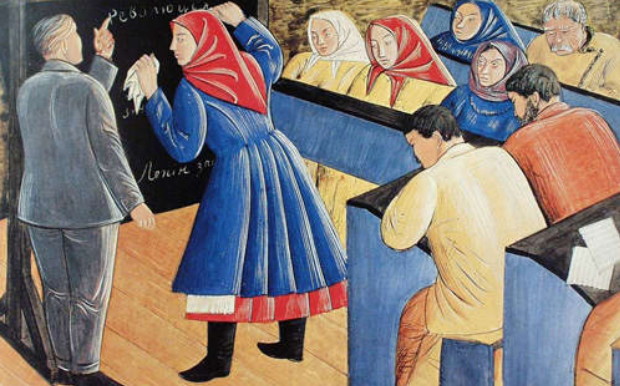Literacy
Literacy (письменність; pysmennist). The ability to read and write in a person who has reached a certain age (nine years being the age standard commonly used in Ukrainian lands for statistical purposes); a distinction is made between full and partial literacy, or the ability to read but not write. At the beginning of the 20th century the majority of the population in Ukrainian lands was illiterate, a result of the state neglect of education (in lands ruled by Austria-Hungary), the absence of legal provision for enforcing compulsory universal education (in lands ruled by Russia), and a weakly developed network of schools. Instruction in foreign (non-Ukrainian) languages and the short length of the school year also hindered full literacy, even among elementary schools graduates. Concerted efforts aimed at increasing literacy were made in Russian-ruled Ukraine by literacy societies (such as Kyiv Literacy Society and Kharkiv Literacy Society) and in Western Ukraine by Prosvita societies.
An 1886 survey showed that 16 percent of Russian army recruits from Right-Bank Ukraine and 26 percent of those from Left-Bank Ukraine were literate (the latter figure reflects a growth in zemstvo schools). The 1897 Russian census revealed that 26 percent of the total population over nine years of age in the Ukrainian gubernias was literate; the figure for Ukrainians there stood at 23.6 percent (38.6 percent of men, 12.4 percent of women). With the expansion of the school system the figure had grown to approximately 42 percent of the total population by 1914.
The transition to using the Ukrainian language as the language of instruction in schools (from 1917), the further expansion of the school system, the introduction of mandatory education measures, and the work of the Liknep (elimination of illiteracy) network during the 1920s and 1930s resulted in increased literacy. Table 1 illustrates the success of these undertakings in popular education.
Notwithstanding such progress, the literacy rate of Ukrainians in the Ukrainian SSR in 1926 was below that of the other national groups in the republic (see table 2). According to Soviet census figures the literacy rate in the Ukrainian SSR continued to rise and reached 85.3 percent in 1938.
The literacy rate among Ukrainians in Western Ukraine was significantly higher than in Russian-ruled Ukraine. In 1900, 25 percent of Ukrainians there were literate; in 1910 the figure reached 43 percent (compared to 47 percent of the total population). The literacy rate continued to grow through the 1920s and 1930s (see table 3).
According to Soviet sources illiteracy ceased to exist in the Ukrainian SSR. Census figures from 1970 show that 99.7 percent of 5– to 49–year-olds were literate.
Volodymyr Kubijovyč
[This article originally appeared in the Encyclopedia of Ukraine, vol. 3 (1993).]
